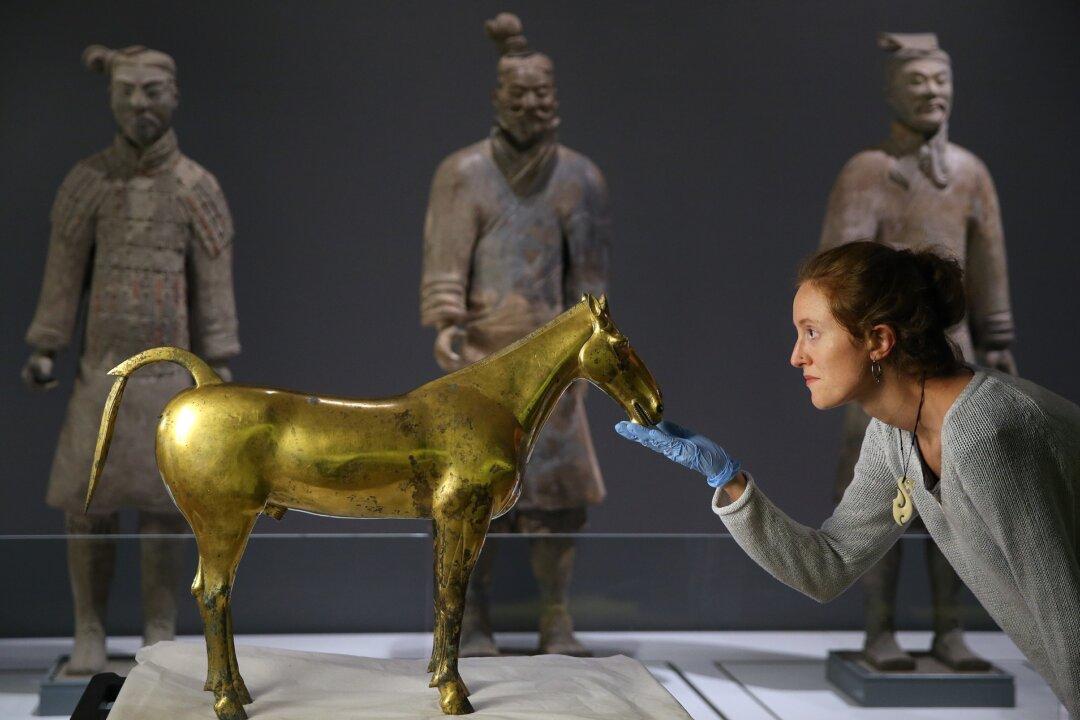Marion Servat-Fredericq, assistant curator of ethnology at the World Museum in Liverpool, England, shares about the “Golden Horse of Maoling”:
The “Golden Horse of Maoling” has not been displayed outside of China for some 10 years. With its golden looks, this gilded bronze horse nearly stole the show when it joined our exhibition “China’s First Emperor and the Terracotta Warriors.” Standing two feet tall and weighing 55 pounds, the famous “Golden Horse of Maoling” is the largest gilded horse ever found in China. It was discovered by farmers on May 1, 1981, in a field near the mausoleum of Emperor Wu (reigned 141 B.C.–87 B.C.).






